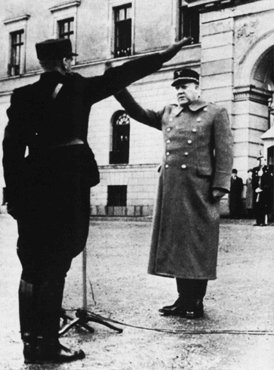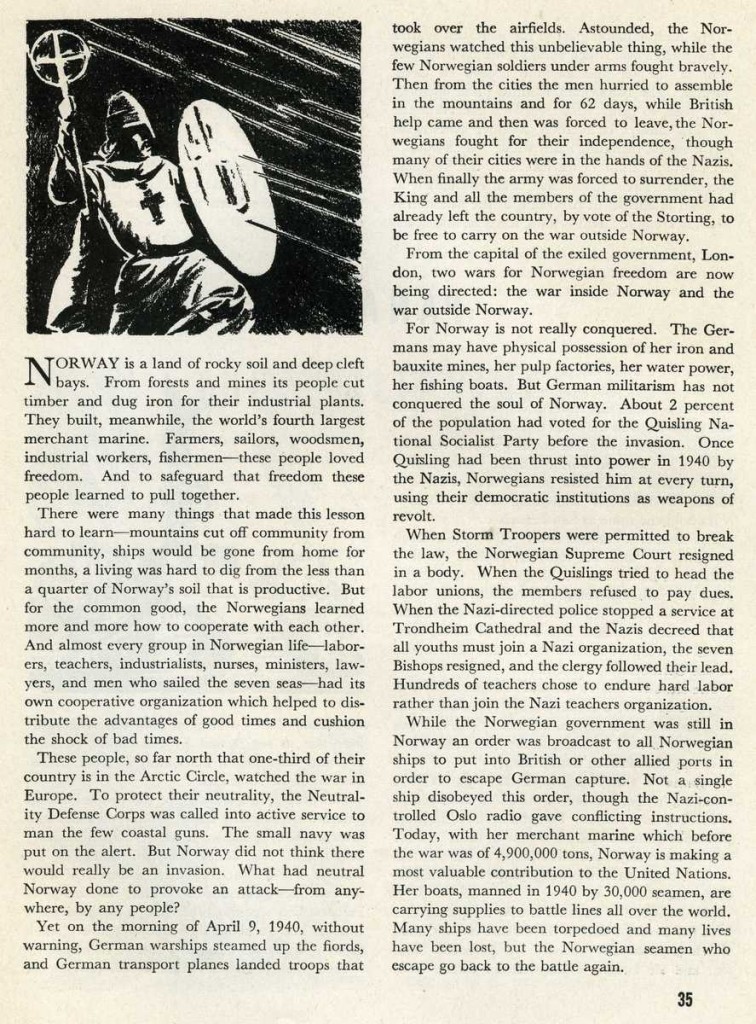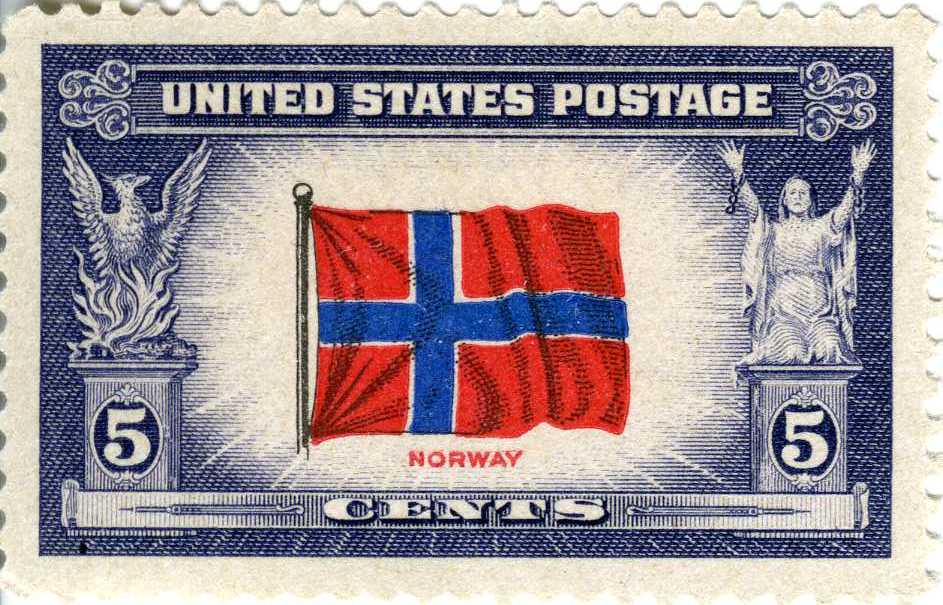Quisling Appointed Minister President

Vidkun Quisling on the day he became Minister President of Norway, 1 February 1942. Photo courtesy of the National Archives
Ever wonder where the word “quisling” comes from? Well, you might be surprised to find out that the term quisling, meaning traitor, originated from perhaps the most infamous Nazi collaborator, Vidkun Quisling (1887-1945). Today marks the 70th anniversary of his appointment to the post of Minister President of Norway, a country that had been declared neutral by its monarch, King Haakon VII, and Johan Nygaardsvold, the democratically elected Prime Minister. In April 1940, German forces took the bet that the British wouldn’t (or couldn’t) aid their Norwegian allies in facing the blatant breach of neutrality. They were right.
Quisling was the leader of a Norwegian national socialist political party, Nasjonal Samling or National Unity, which he founded in 1933—coincidentally the same year that Hitler assumed the chancellery in Berlin. In many ways, Quisling’s personal belief system organically reflected that of the Nazi party. He developed his own system of philosophy which he called “Universism,” a blend of his Lutheran principles with an emphasis on science, that justified his actions during the war, but which he used to assail Nazi principals afterward.
Quisling was a military man, and a remarkably intelligent one at that, having earned the highest score on his entrance exam to the Norwegian Military Academy, and then graduating first in his class from the Military College with the highest marks ever in the school’s existence. He went on to serve in Russia as the Norway’s foremost expert on the country.
In the 1920s the Norwegian army was downsizing, costing Quisling his job. For a short time, he was ironically a member of the communist party, surely at least partly a result of having spent so much time in communist Russia, in conjunction with his unemployment. Throughout the decade, Quisling and his wife moved around the world, taking what work he could find. It was after this time that he returned to Russia to act as liaison between Great Britain and the Soviet Union. In fact, he was honored by King George VI for the work done on his country’s behalf, an award which would be rescinded when Quisling turned his back on Norway and its allies.
His fascist ideology came into full effect when he permanently moved back to Norway in the 1930s. He hoped to change Norwegian government by radically altering the country’s constitution, gathering like-minded men around him in small meetings in the true fascist fashion. Aside from governmental concerns, Quisling’s posse was also concerned with the cleansing of races, again mirroring the Nazi movement in Germany. They also mimicked the Führerprinzip, or the belief that to be successful, the group needed a single, strong handed leader to reach their goals.
As Minister of Defense from 1931 to 1933, Quisling gained some popularity, thought not with everyone. As he and his party aligned more and more with the racist and extremist policies of Nazi Germany, their support declined. But when on 9 April 1940, Germany invaded neutral Norway and quickly overran the country, the democratically elected Nygaardsvold and his cabinet fled to London. Hitler sought control of Norway for several reasons, including access to natural resources as well as a better position from which to fight for supremacy of the Atlantic. He may also have felt that if he failed to invade Norway, surely the western powers would; this would be unacceptable. The country quickly fell to the Germans, and Norway was occupied until the end of the war.

Excerpt about Norway in the booklet “The Thousand Million: Brief stories about the United Nations, where one thousand million friends of the Untied States live, work, and fight.” Gift of Allen B. Corderman, The National WWII Museum, 2000.248.018
Without communicating his intentions to Germany, Quisling essentially declared his party the ruling party of Norway, counting on the hope that his German counterparts would see his possible usefulness and legitimize his declaration. While his “coup” didn’t last long, less than a week, the German-appointed official overseeing Norway, Reichskommissar Josef Terboven, approved of Quisling and agreed that a native Norwegian by his side could help solidify his power in the country. The day after the war in Europe ended, Quisling was arrested. He was ultimately tried and convicted, killed by a firing squad on 24 October 1945.

Commemorative stamp celebrating US support of Norway. Gift of Dr. Henry Ohlen, The National WWII Museum, 2011.362.006
This post by Curator Meg Roussel
- Posted :
- Post Category :
- Tags :
- Follow responses to this entry through the RSS 2.0 feed. You can skip to the end and leave a response. Pinging is currently not allowed.




Leave a Reply